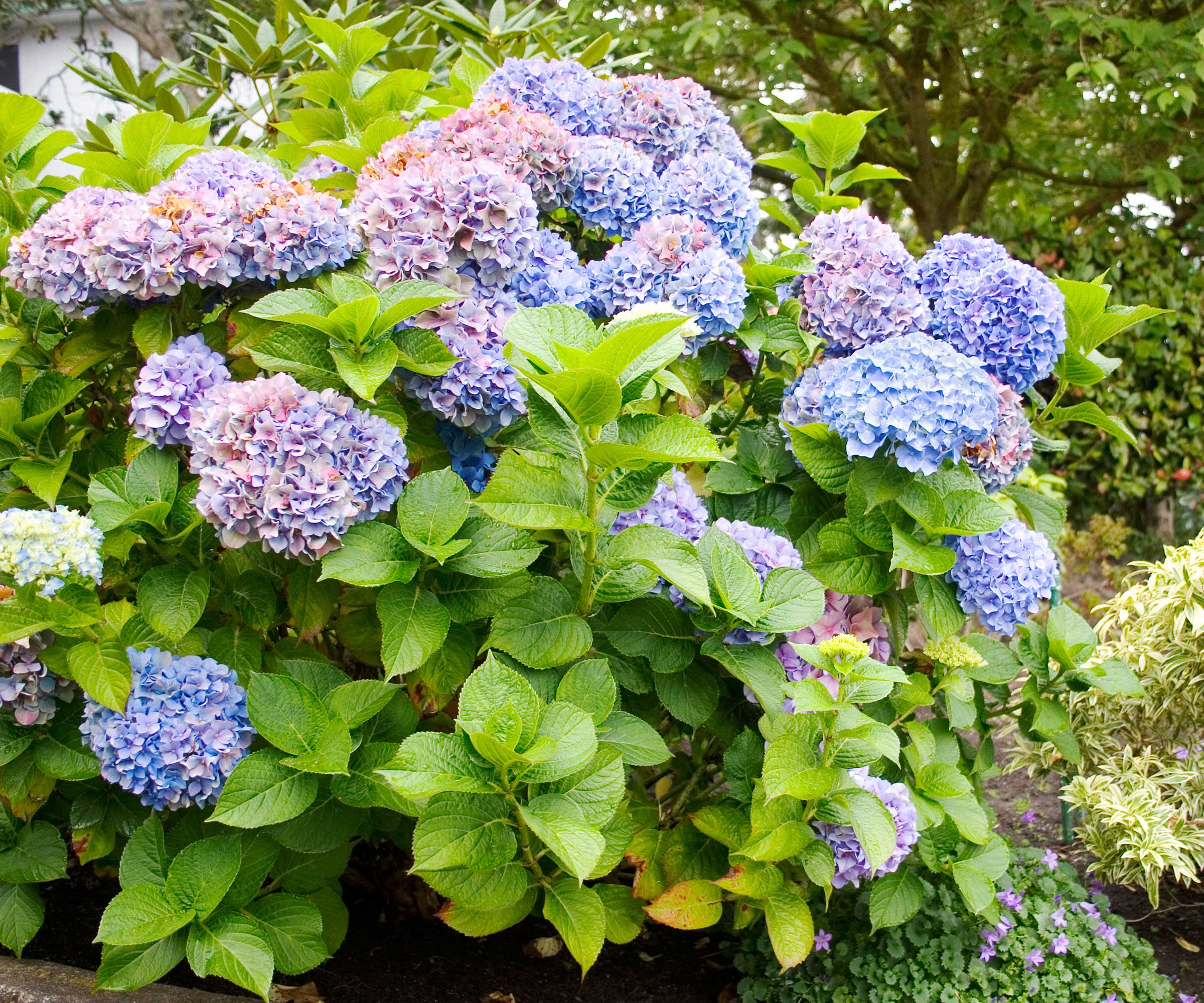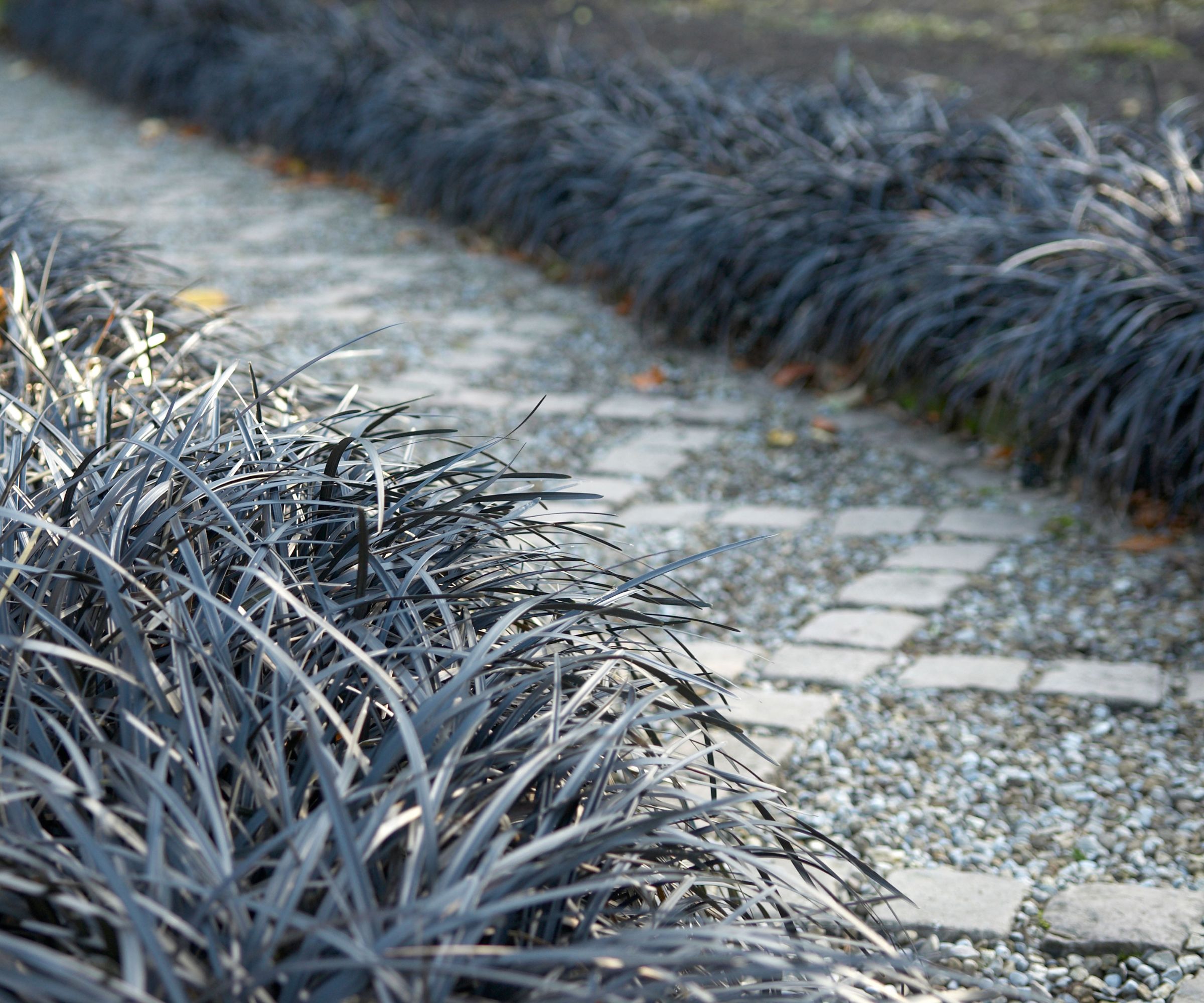
Hydrangeas are the one flowering shrub I simply couldn't be without in my yard. They have a long-flowering season, producing large heads of frothy blooms in a variety of shapes and varieties, and ranging from creamy white to blush, lilac, blue and magenta. Hydrangeas can also grow quite large if you let them, filling space in beds and borders with their bushy foliage and providing textural interest in the winter months.
When deciding what to plant with hydrangeas, consider not just varieties that will complement the plants visually, but those that will thrive in the same growing environment. Knowing how to successfully mix different plants is an important part of learning how to grow hydrangeas. And, of course, companion planting, can be beneficial for every plant in the mix.
'Hydrangeas have an easy sort of elegance. Their bold yet simple blooms make them the perfect companion for an exciting range of plants in the landscape,’ says Kip McConnell, director of Southern Living Plant Collection. We have gathered 10 of the best hydrangea companion plants, designed to complement and enhance your hydrangea blooms.

How to choose the best hydrangea companion plants
‘The best companion plants for hydrangeas depend on your type of hydrangea, where you grow it (warm or cold zones), how you site it (south facing, east facing, etc), and the color of the flowers,’ says Lorraine Ballato, author of Success With Hydrangeas.
Hydrangeas grow best in moist, well-draining soil, and will thrive in both acidic or alkaline soil. It’s important to know what soil type you have, so when considering what to plant with hydrangeas, you can choose other varieties to suit.
Interestingly, the flowers of some types of hydrangea will change depending on the soil pH – blue for acidic and pink for alkaline, so the colour of your hydrangea can tell you a lot about the acidity of the soil, and help you find a plant that will thrive next to it. With the right pairings, can really amplify a color palette and provide months of beauty before passing on the baton to their companion plant.
1. Hostas

Hostas are a great companion plant for hydrangeas. These hardy perennials thrive in nutrient-rich, moist – but not waterlogged – soils, preferring slightly acidic growing mediums. And, like hydrangeas, they prefer partial shade.
These plants are low growing, providing interest at the base of a larger hydrangea. They also feature drop-shaped leaves with bright margins, that highlight the plain greenery and pastel-colored inflorescences of hydrangeas. A perfect pairing if you're planning on landscaping with hydrangeas in a larger part of your yard.
- Flower color: Purple, mauve, pink, white
- Hardiness zones: USDA 3-9
- Scientific name: Hosta
- Time of year to plant: Spring, fall
2. Daylilies

When considering what to plant with hydrangeas, think about classic color combinations.
‘If you have a big leaf hydrangea with big blue or pink flowers, try daylilies in contrasting colors like orange – it's a classic Van Gogh color scheme,’ says Lorraine Ballato.
Daylilies are striking perennials with exotic-looking lily-like flowers. Though they may appear delicate, they are surprisingly hardy and easy to grow, and will thrive in most soil types.
‘The trouble-free daylilies can take the part shade needs of the hydrangea and still produce great flowers,’ she adds.
There are a huge number of daylily varieties available to browse for inspiration at Nature Hills.
- Flower color: White, orange, yellow, apricot, burgundy, pink and red
- Hardiness zones: UDSA 2-9
- Scientific name: Hemerocallis
- Time of year to plant: Spring, late summer or fall
3. Gardenia

The cloud-like blooms of a white hydrangea paired with the fragrant white blossoms of gardenia is the ultimate in elegance.
The 'Diamond Spire' gardenia, available from The Home Depot, works particularly well with hydrangeas, producing fragrant, single white blossoms late spring through fall with an upright habit.
However, bear in mind gardenia will only thrive outdoors in warmer climes – there are varieties suitable for USDA zones 7a-10b – otherwise they can only be grown indoors.
Gardenias enjoy plenty of moisture to maximize their glorious blossoms, feed them by applying an acidic, slow-release fertilizer such as an azalea or camellia fertilizer.
- Flower color: white, pink
- Hardiness zones: USDA 7a - 10b
- Scientific name: Gardenia
- Time of year to plant: Fall
4. Coneflower

‘Echinacea purpurea blooms around the same time as hydrangeas and adds a pop of color. It is a great plant to include in the foreground of your hydrangeas,’ says Sam Hoadley, manager of horticultural research at Mt. Cuba Center botanical gardens.
Tolerant of partial shade, echinacea purpurea grows well in moist fertile soils where hydrangeas thrive – as long as it is well draining – and can be planted in acidic or alkaline soil.
‘As an added bonus, this species is also known to attract a large number of insect pollinators,’ adds Hoadley.
You can find coneflower seeds at True Leaf Market.
- Flower color: Pink, white, lime, yellow, red, and orange
- Hardiness zones: USDA 4-9
- Scientific name: Echinacea purpurea
- Time of year to plant: Spring and early fall
5. Pieris japonica

Flowering early in the season, Pieris japonica, or Japanese andromeda, is a great companion plant for hydrangeas.
‘This spring-blooming shrub partners well in a shrub border with hydrangeas; I consider it the opening act for the summertime hydrangea display, says Bob Polomski, horticulturist with Clemson University Cooperative Extension.
‘This evergreen prefers acidic soils and is a suitable companion for hydrangeas that produce blue flowers at a soil pH of 5.5 or less.’
As with hydrangeas, Pieris japonica needs a partially shaded, sheltered spot.
- Flower color: Green and reddish pink
- Hardiness zones: USDA 5-8
- Scientific name: Pieris japonica
- Time of year to plant: Fall
6. Conifers

When thinking about what to plant with hydrangeas, don't overlook trees and bushes. Conifers, such as junipers, pines, and dwarf pines, are some of the best companion plants for hydrangeas.
You could create various elegant compositions by combining tall thujas and spreading hydrangea bushes. It’s better to grow these plants on two levels – high trees in the background and lower bushes in front of them.
Conifers are a broad species, but generally they prefer acidic, well-draining soil. As evergreen plants, they add color and interest to the garden year round, including in winter. When the cold weather arrives, make sure you know how to winterize hydrangeas to protect them from the elements – and to show them off against the conifers.
- Flower color: Green
- Hardiness zones: USDA 6-8
- Scientific name: Various, depending on the choice of conifer
- Time of year to plant: Early spring and early fall
7. Ornamental grasses

Ornamental grasses add a wonderfully textural contrast to hydrangeas. Many species are non-invasive, and will happily fill a border, nestling in around other plants.
‘If your hydrangea has a white flower, try some black mondo grass. The contrasting color which it holds all season long marries well with the hydrangea and grows happily in similar conditions,’ says Lorraine Ballato.
‘Another very popular companion plant is Japanese forest grass. Like the mondo grass, it holds its golden color all season long and enjoys the same growing conditions as the hydrangea.’
- Flower color: Ranging from black to mauve and green
- Hardiness zones: USDA 6-9
- Scientific name: Ophiopogon Mondo Grass 'Nigrescens'
- Time of year to plant: Early spring
8. Camellias

Some hydrangeas can provide glorious blooms over almost three seasons, offering a radiant show when the weather is on the warmer side. But what about winter? Well, a clever pairing of camellia offers blooms that pick up where hydrangeas leave off, ensuring your garden has almost year-round flowers.
Camellias prefer well-drained, acidic soil, and warm climates. The simplest way to provide it is to use a commercial mix for rhododendrons and azaleas, such as this plant fertilizer from Walmart.
- Flower color: Pink, cream, read and yellow
- Hardiness zones: USDA 6-10
- Scientific name: Camellia
- Time of year to plant: Fall and spring
9. Astilbe

Commonly known as the false goat's beard, astilbe grows well alongside hydrangeas. The frothy flowering plant likes shade, requires abundant watering, and thrives in acidic growing mediums.
With its lush foliage, the false goat's beard keeps its decorative value even after the blooming season is over.
The plant’s fern-like delicate branches offer a pleasing contrast against the background of hydrangeas’ rounder, more substantial leaves.
- Flower color: Pink, magenta, red, cream and white
- Hardiness zones: USDA 4-9
- Scientific name: Astilbe
- Time of year to plant: Spring or fall
10. Clematis viorna

‘Clematis viorna, also known as vasevine or leatherflower, is a lesser-known native plant species that would be stunning when allowed to climb up Hydrangea arborescens,’ says Sam Hoadley.
Clematis viorna roots thrive in cool shaded conditions at the base of the hydrangea shrub while their vining top growth is tolerant of part shade to full sun and can gently twine though the hydrangea shrub itself.
‘Their whimsical, bell-shaped flowers would offer a pop of color and contrast to the large showy inflorescences of the hydrangeas,’ adds Hoadley.
- Flower color: Pink, burgundy, purple
- Hardiness zones: USDA 4a - 9b
- Scientific name: Clematis viorna
- Time of year to plant: Early spring
FAQs
Can you plant roses and hydrangeas together?
It is possible to plant roses and hydrangeas together. However, as roses are sun loving, while hydrangeas prefer some shade, you will need a more tolerant variety. Paniculate hydrangea 'Limelight' thrives in full sun, and its limey colored blooms make a perfect foil for romantic pink roses.
Can you plant peonies and hydrangeas together?
As peonies flower earlier in the season than hydrangeas, they can make lovely planting companions. Once they are over, the plant will begin to die back, making way for hydrangeas to shine. Peonies thrive in full sun or partial shade, and prefer a sheltered spot. They are also tolerant of most soil types, provided they are free draining.
There are many different varieties of hydrangea - some are climbing varieties while others are bushy shrubs with huge globe flowerheads. They have different pruning needs depending on their type - knowing how to prune Annabelle hydrangeas may be different from the Bobo variety, but once you know the method for pruning, and when to prune, your shrubs will continue to thrive.







